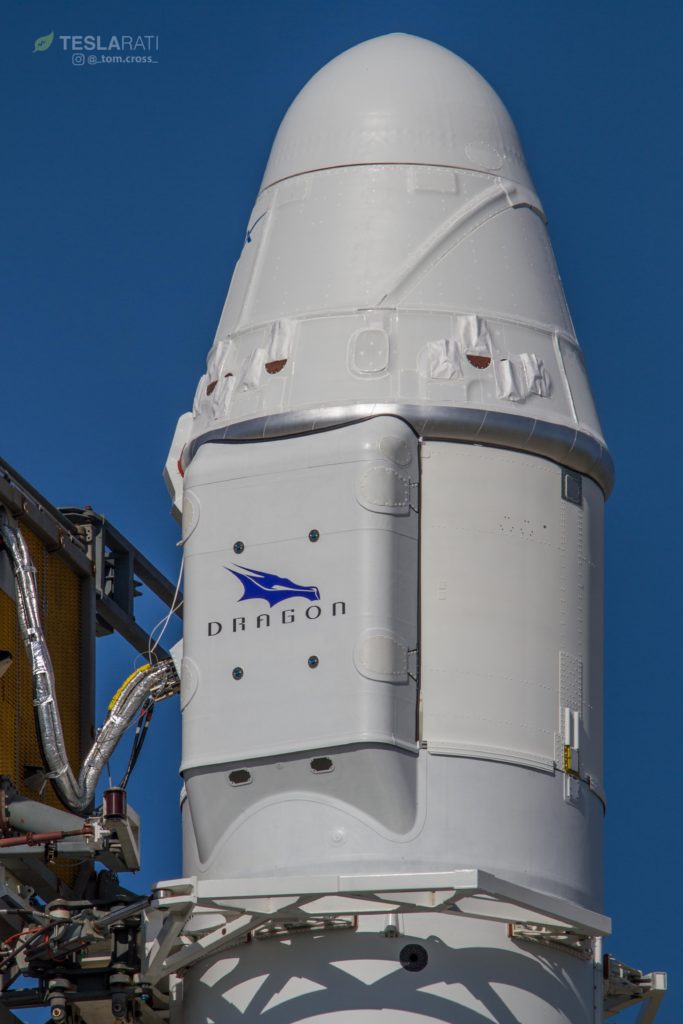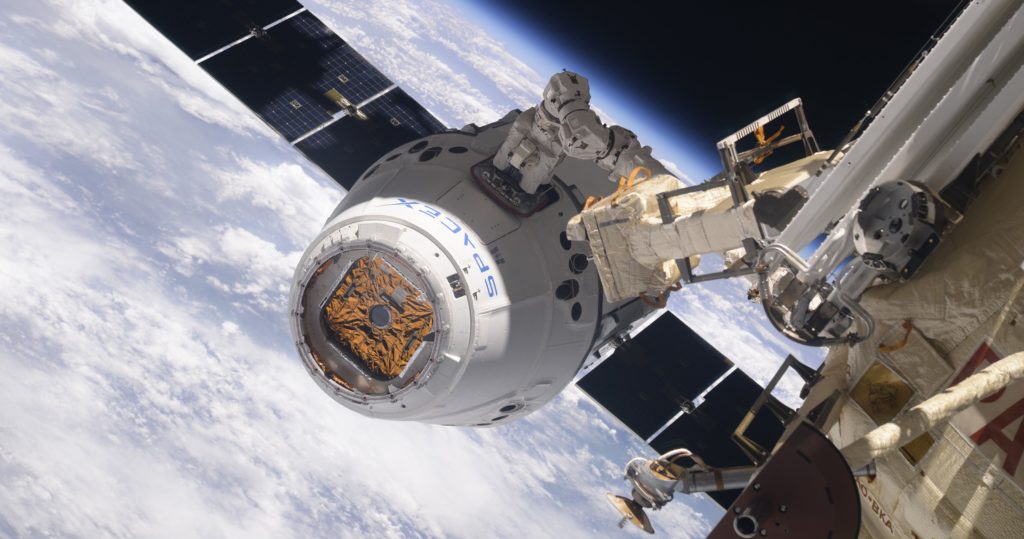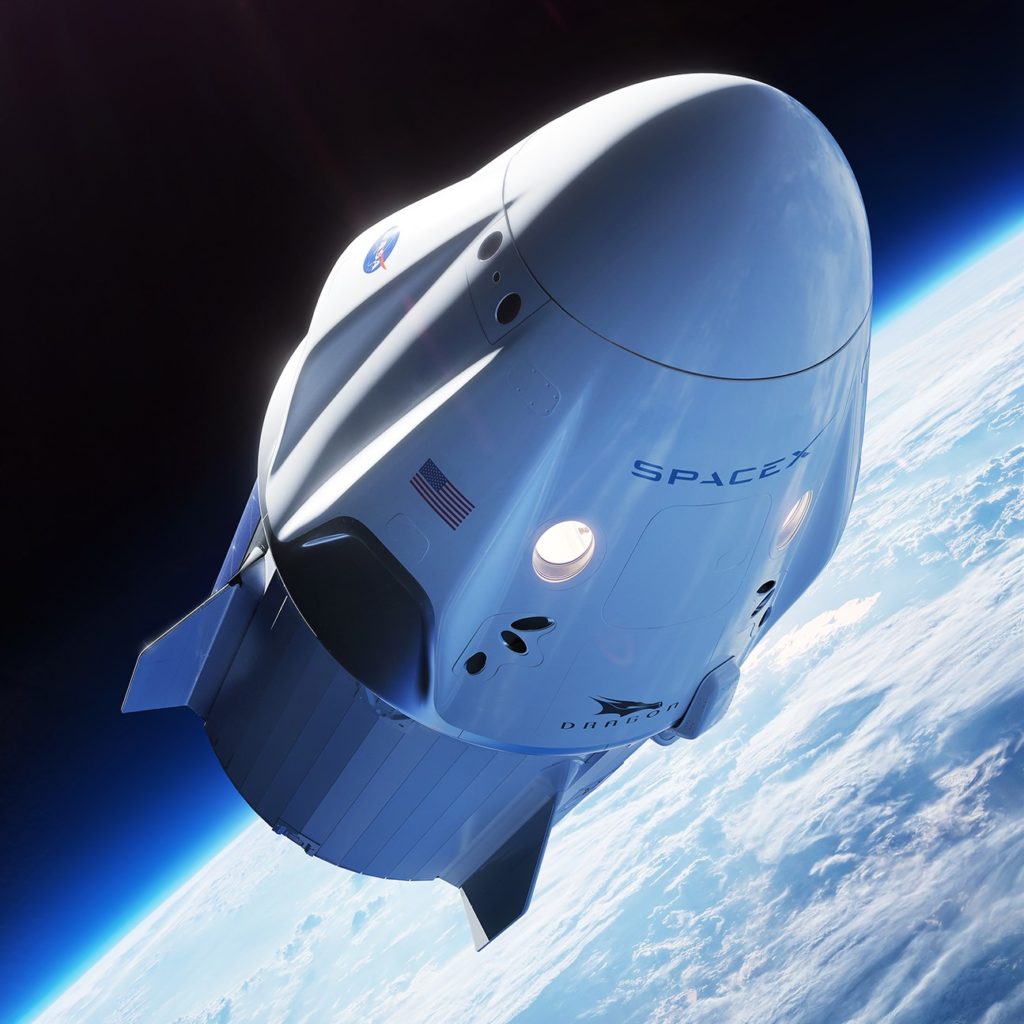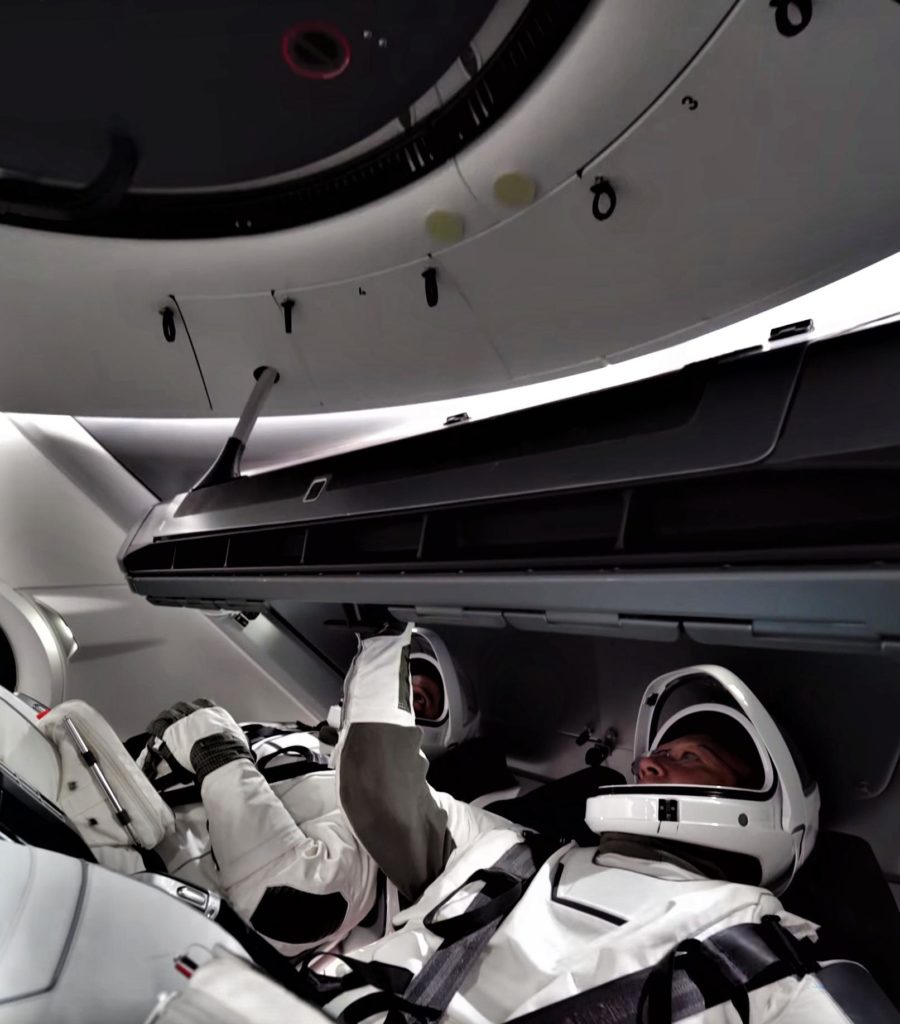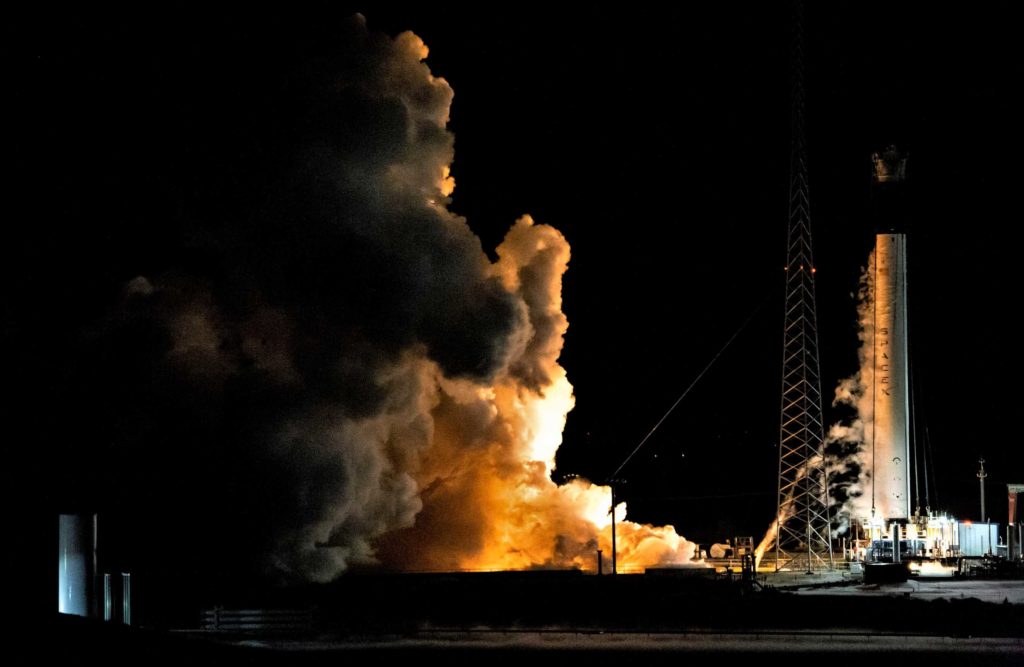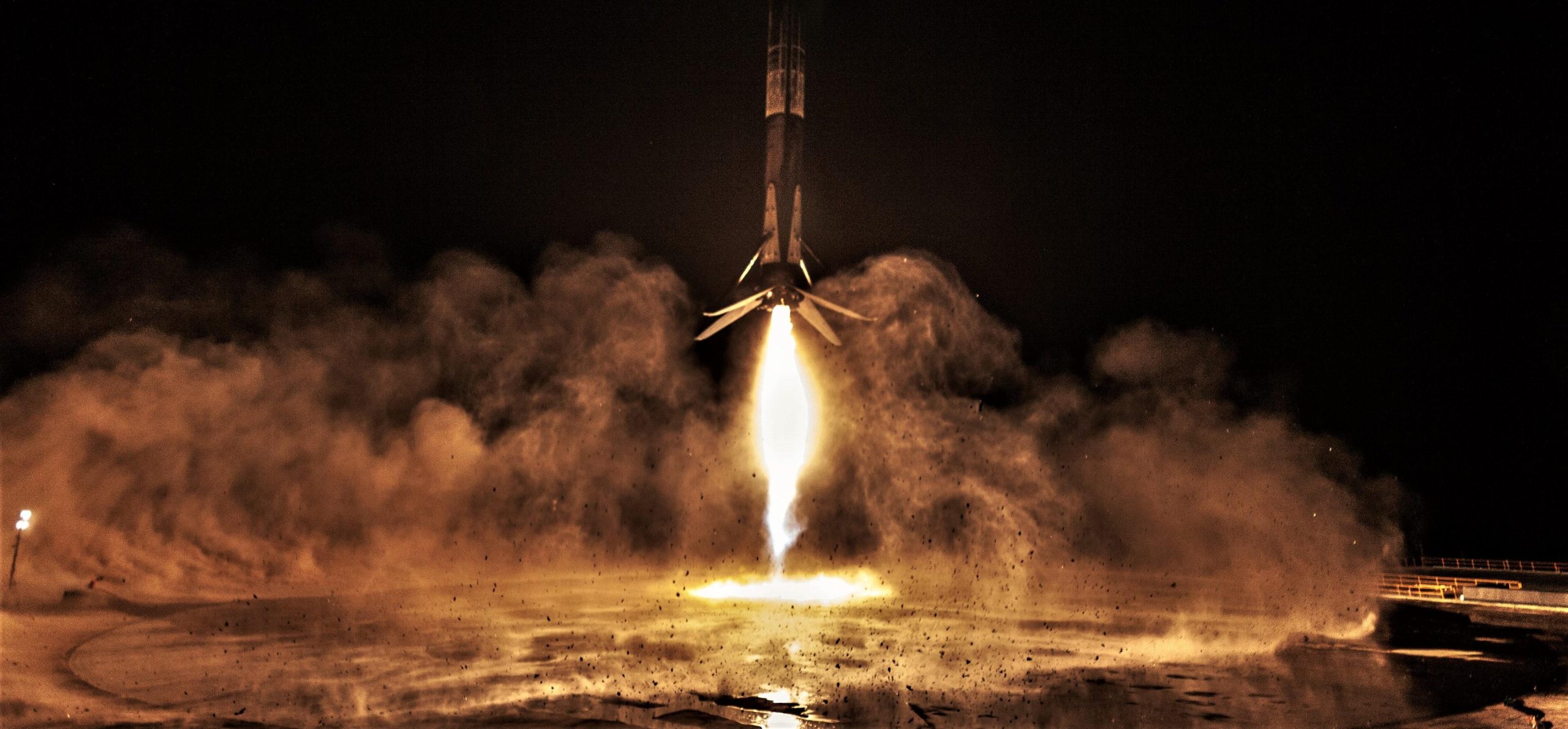
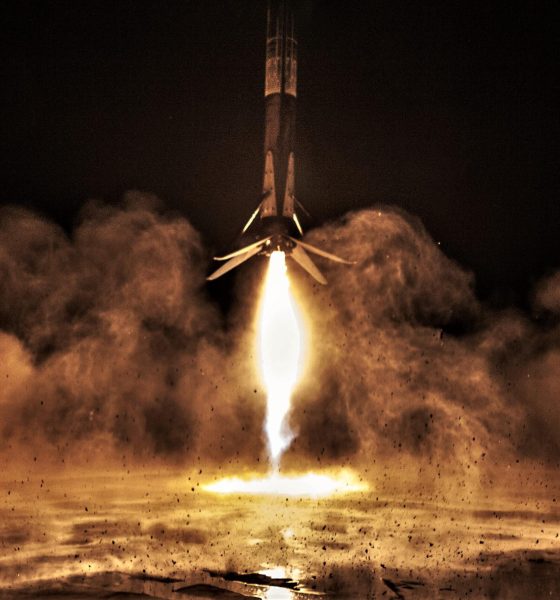
News
SpaceX Falcon 9 rocket spied at Pad 39A as December launch quartet aligns
Photographer Tom McCool lucked upon an open hangar door at Pad 39A on November 27, catching a fresh Falcon 9 Block 5 booster in the late stages of pre-launch integration.
Likely to launch one of two particularly important payloads sometime in the next 4-8 weeks, this booster spotting aligns with what is anticipated to be a fairly busy December for SpaceX, marked by four possible launches and preparations for the imminent inaugural test flight of Crew Dragon.
#SpaceX had the door open to the HIF at 39A this morning showing us a #Falcon9 pic.twitter.com/3aECxYP4Y7
— Tom (@Cygnusx112) November 27, 2018
At the moment, SpaceX is the juggling shipment, integration, and preflight checkouts of at least three shiny new Falcon 9 Block 5 rockets ahead of critical US Air Force and NASA launches in December and January. In order of anticipated launch date, those boosters are B1050, B1054, and B1051 for CRS-16 (Cargo Dragon), an upgraded GPS III satellite, and DM-1 (Crew Dragon), respectively.
CRS-16
On the East Coast, SpaceX’s next launch is the 16th operational resupply mission for Cargo Dragon, scheduled to deliver several tons of critical supplies to the International Space Station no earlier than (NET) December 4th. Set to launch from SpaceX’s Cape Canaveral Air Force Station (CCAFS) Launch Complex 40 (LC-40), the new Block 5 booster B1050 is already integrated and at the ready inside the company’s LC-40 hangar, awaiting the arrival and attachment of a flight-proven Cargo Dragon.
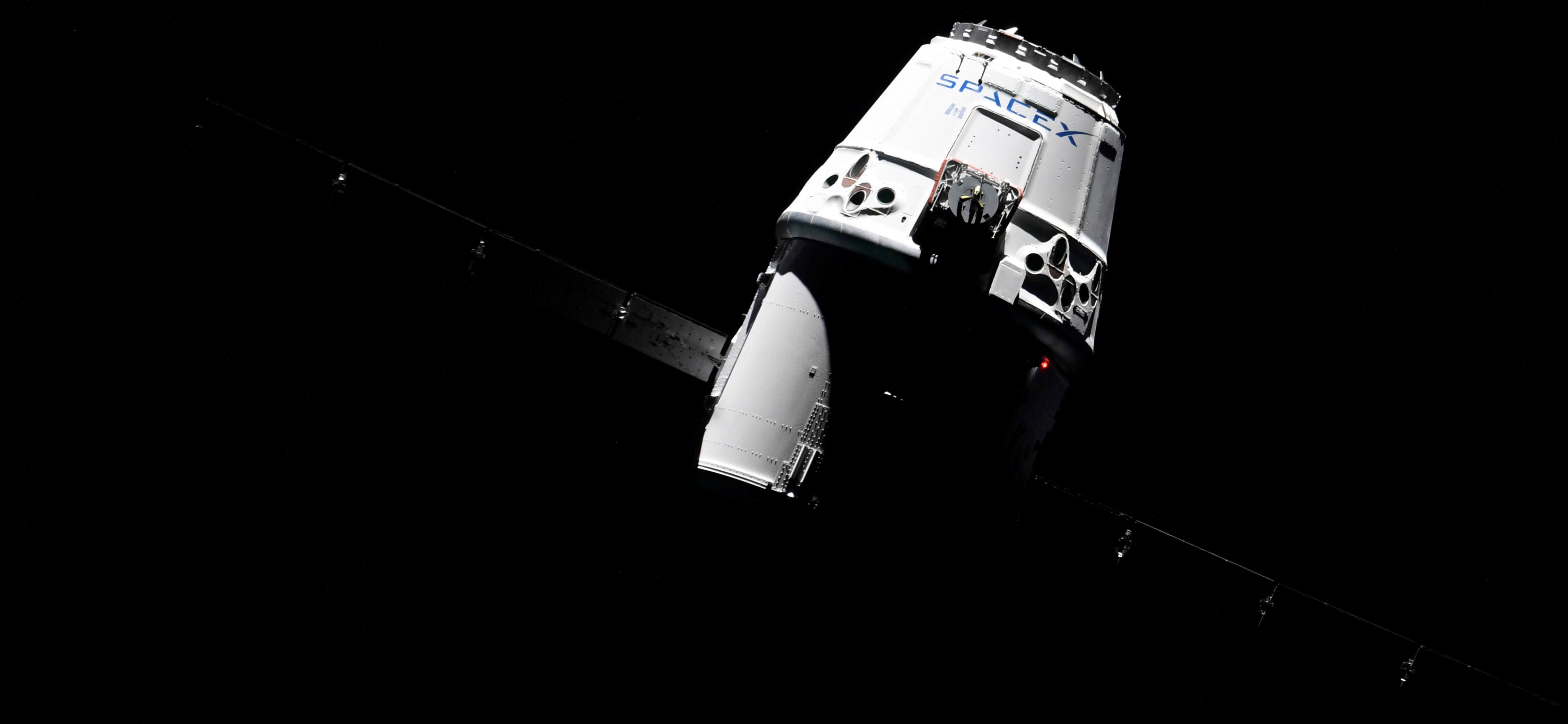
While it’s unknown which Dragon capsule that will be, SpaceX has anywhere from 4-8 recovered spacecraft to choose from, although expendable trunks (a detachable aft section adorned with solar arrays and storage space) must still be built for each future resupply mission. According to CEO Elon Musk and other SpaceX executives, Cargo Dragon was designed from the start to be capable of at least three orbital missions with refurbishment, and it’s possible that CRS-16 could be the third launch for one such capsule.
After sending Cargo Dragon and the upper stage on their way, Falcon 9 B1050 will likely perform the first Block 5 Return To Launch Site (RTLS) recovery, performing a 180 degree flip and burning back towards the Florida coast to land just a few miles away from the launch site.
- A flight-proven Cargo Dragon prepares to launch in support of CRS-14. (Tom Cross)
- CRS-14’s flight-proven Cargo Dragon captured on orbit in April 2018 by astronaut Oleg Artemyev. (NASA/Oleg Artemyev)
GPS III-01 (the first of many)
Of the five launch contracts thus competed for the first ten GPS III satellite launches, SpaceX has won all five, while ULA’s Delta IV was awarded a launch contract for one of those satellites, leaving four more up for grabs in the next several years. The first ‘Space Vehicle’, GPS III serial number 01 (GPS III-01), is now ready for launch, pending the completion of certain USAF reviews of SpaceX’s recently-debuted Block 5 Falcon 9 upgrade.
Now targeting NET December 18, perhaps the most curious aspect of Falcon 9’s first GPS launch is the glaring reality that most signs currently point toward an intentionally expendable configuration of the new Falcon 9 Block 5 booster. Given that SpaceX has made it abundantly clear that Block 5 boosters at least aspire to be able to perform 10 launches with little to no refurbishment, expending a fresh booster without even a single reuse would carry a potentially immense opportunity cost.
Booster B1054 is set to be invovled with this mission. It's currently classed as "Expendable" meaning no recovery on the Eastern Range.
This is the passenger: pic.twitter.com/ohJFIz197P
— NSF – NASASpaceflight.com (@NASASpaceflight) November 19, 2018
By all reasonable estimation, Falcon 9 Block 5 should be able to place the ~3900 kg (8600 lb) GPS III satellite into a medium Earth orbit with plenty of margin left over for a drone ship recovery in the Atlantic. Likely to launch aboard Falcon 9 B1054, the only possible explanation for an expendable mission would be a request (or demand) from SpaceX’s customer, the USAF.
Crew Dragon’s orbital debut (DM-1)
Finally, SpaceX and NASA have – perhaps for the first time in the history of the Commercial Crew Program (CCP) – set an actual date for the first orbital launch of a spacecraft developed under the program’s purview, in this case SpaceX’s Crew Dragon atop a Falcon 9 Block 5 rocket. NET January 7 2019, that date is certainly tenuous, but it effectively indicates that SpaceX is certain the hardware, software, and general operations side of things is all good to go. SpaceX is now more or less waiting on NASA’s dreadfully slow bureaucracy to perform the far more mundane duties of completing paperwork, coordinating ISS schedules to fit Crew Dragon in, and other miscellaneous tasks.
- In this illustration, a SpaceX Crew Dragon spacecraft is shown in low-Earth orbit. (SpaceX)
- DM-2 astronauts Bob Behnken and Doug Hurley train for their first flight in Crew Dragon. (NASA)
- B1051 performed its last Texas static fire last month and has since shipped to Florida. (SpaceX)
Time will tell, but COO and President Gwynne Shotwell stated in October 2018 that she fully expected Falcon 9 and the first orbit-ready Crew Dragon to be vertical at Pad 39A before the month of December is out, basically ready to launch as soon as NASA and ISS scheduling are ready to allow it. It’s nearly impossible to know for sure, but the rocket spotted on Tuesday inside Pad 39A’s hangar could very well be Falcon 9 B1051 and a crew-ready upper stage preparing for Crew Dragon’s first autonomous test flight, or it could be B1054 (unconfirmed) in the late stages of preparation for SpaceX’s imminent GPS III launch.
All will be made clear in the coming weeks. Meanwhile, SpaceX’s next launch – SSO-A on the West Coast – has slipped into the first few days of December thanks to some unusually harsh weather conditions above the launch pad.

News
Tesla China delivery centers look packed as 2025 comes to a close
Needless to say, it appears that Tesla China seems intent on ending 2025 on a strong note.

Tesla’s delivery centers in China seem to be absolutely packed as the final days of 2025 wind down, with photos on social media showing delivery locations being filled wall-to-wall with vehicles waiting for their new owners.
Needless to say, it appears that Tesla China seems intent on ending 2025 on a strong note.
Full delivery center hints at year-end demand surge
A recent image from a Chinese delivery center posted by industry watcher @Tslachan on X revealed rows upon rows of freshly prepared Model Y and Model 3 units, some of which were adorned with red bows and teddy bears. Some customers also seem to be looking over their vehicles with Tesla delivery staff.
The images hint at a strong year-end push to clear inventory and deliver as many vehicles as possible. Interestingly enough, several Model Y L vehicles could be seen in the photos, hinting at the demand for the extended wheelbase-six seat variant of the best-selling all-electric crossover.
Strong demand in China
Consumer demand for the Model Y and Model 3 in China seems to be quite notable. This could be inferred from the estimated delivery dates for the Model 3 and Model Y, which have been extended to February 2026 for several variants. Apart from this, the Model Y and Model 3 also continue to rank well in China’s premium EV segment.
From January to November alone, the Model Y took China’s number one spot in the RMB 200,000-RMB 300,000 segment for electric vehicles, selling 359,463 units. The Model 3 sedan took third place, selling 172,392. This is quite impressive considering that both the Model Y and Model 3 are still priced at a premium compared to some of their rivals, such as the Xiaomi SU7 and YU7.
With delivery centers in December being quite busy, it does seem like Tesla China will end the year on a strong note once more.
News
Tesla Giga Berlin draws “red line” over IG Metall union’s 35-hour week demands
Factory manager André Thierig has drawn a “red line” against reducing Giga Berlin’s workweek to 35 hours, while highlighting that Tesla has actually increased its workers’ salaries more substantially than other carmakers in the country.

Tesla Giga Berlin has found itself in a new labor dispute in Germany, where union IG Metall is pushing for adoption of a collective agreement to boost wages and implement changes, such as a 35-hour workweek.
In a comment, Giga Berlin manager André Thierig drew a “red line” against reducing Giga Berlin’s workweek to 35 hours, while highlighting that Tesla has actually increased its workers’ salaries more substantially than other carmakers in the country.
Tesla factory manager’s “red line”
Tesla Germany is expected to hold a works council election in 2026, which André Thierig considers very important. As per the Giga Berlin plant manager, Giga Berlin’s plant expansion plans might be put on hold if the election favors the union. He also spoke against some of the changes that IG Metall is seeking to implement in the factory, like a 35-hour week, as noted in an rbb24 report.
“The discussion about a 35-hour week is a red line for me. We will not cross it,” Theirig said.
“(The election) will determine whether we can continue our successful path in the future in an independent, flexible, and unbureaucratic manner. Personally, I cannot imagine that the decision-makers in the USA will continue to push ahead with the factory expansion if the election results favor IG Metall.”
Giga Berlin’s wage increase
IG Metall district manager Jan Otto told the German news agency DPA that without a collective agreement, Tesla’s wages remain significantly below levels at other German car factories. He noted the company excuses this by referencing its lowest pay grade, but added: “The two lowest pay grades are not even used in car factories.”
In response, Tesla noted that it has raised the wages of Gigafactory Berlin’s workers more than their German competitors. Thierig noted that with a collective agreement, Giga Berlin’s workers would have seen a 2% wage increase this year. But thanks to Tesla not being unionized, Gigafactory Berlin workers were able to receive a 4% increase, as noted in a CarUp report.
“There was a wage increase of 2% this year in the current collective agreement. Because we are in a different economic situation than the industry as a whole, we were able to double the wages – by 4%. Since production started, this corresponds to a wage increase of more than 25% in less than four years,” Thierig stated.
News
Tesla is seeing a lot of momentum from young Koreans in their 20s-30s: report
From January to November, young buyers purchased over 21,000 Teslas, putting it far ahead of fellow imported rivals like BMW and Mercedes-Benz.

Tesla has captured the hearts of South Korea’s 20s-30s demographic, emerging as the group’s top-selling imported car brand in 2025. From January to November, young buyers purchased over 21,000 Teslas, putting it far ahead of fellow imported rivals like BMW and Mercedes-Benz.
Industry experts cited by The Economist attributed this “Tesla frenzy” to fandom culture, where buyers prioritize the brand over traditional car attributes, similar to snapping up the latest iPhone.
Model Y dominates among young buyers
Data from the Korea Imported Automobile Association showed that Tesla sold 21,757 vehicles to the 20s-30s demographic through November, compared to BMW’s 13,666 and Mercedes-Benz’s 6,983. The Model Y led the list overwhelmingly, with variants like the standard and Long Range models topping purchases for both young men and women.
Young men bought around 16,000 Teslas, mostly Model Y (over 15,000 units), followed by Model 3. Young women followed a similar pattern, favoring Model Y (3,888 units) and Model 3 (1,083 units). The Cybertruck saw minimal sales in this group.
The Model Y’s appeal lies in its family-friendly SUV design, 400-500 km range, quick acceleration, and spacious cargo, which is ideal for commuting and leisure. The Model 3, on the other hand, serves as an accessible entry point with lower pricing, which is valuable considering the country’s EV subsidies.
The Tesla boom
Experts described Tesla’s popularity as “fandom culture,” where young buyers embrace the brand despite criticisms from skeptics. Professor Lee Ho-geun called Tesla a “typical early adopter brand,” comparing purchases to iPhones.
Professor Kim Pil-soo noted that young people view Tesla more as a gadget than a car, and they are likely drawn by marketing, subsidies, and perceived value. They also tend to overlook news of numerous recalls, which are mostly over-the-air software updates, and controversies tied to the company.
Tesla’s position as Korea’s top import for 2025 seems secured. As noted by the publication, Tesla’s December sales figures have not been reported yet, but market analysts have suggested that Tesla has all but secured the top spot among the country’s imported cars this year.
